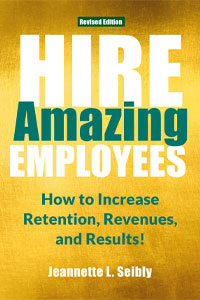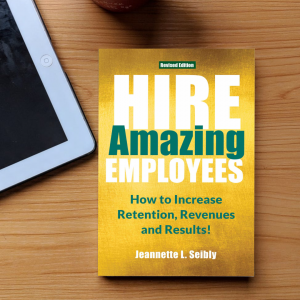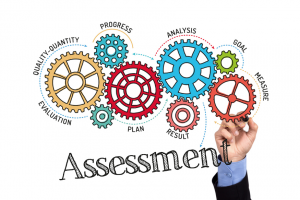
“The paradox is that the very things that hold us back are the reasons we need a coach in the first place.” Seth Godin
Being coachable opens up unimaginable doors and opportunities!
- All successful leaders and future leaders have coaches!
- As a result, they develop the skills, competencies, and inner confidence that comes from being coachable.
- In addition, being coachable uncovers blind spots that get in the way of receiving promotions, special assignments, and acknowledgments.
- They become an influencer and leader that others want to follow.
What Does Being Coachable Mean?
“Coachability is not a technical skill or an inherent ability. It is a mental attitude.” It reflects your ability to ask for feedback, listen, and make appropriate changes. Learning from constructive criticism is also a reflection of your emotional intelligence (EQ). (mvorganizing.org)
What Does Being Uncoachable Look Like?
You roll your eyes, take things personally, and have myriad excuses for why you don’t or won’t ____ (fill in the blank). You are unhappy being stuck in your career and unwilling to do the right work to change it.
How To Improve Your Coachability!
- Be Open to Learning. While you may want to seek out people more experienced than you, remember, you can learn something from anyone, anywhere!
- Seek Out Feedback. Ask team members, customers, and your boss for feedback, and leave your ego at the door! For example, ask, “What’s one thing that would help me improve my project results? Or, ability to work well with others?” Listen and be respectful, especially if the feedback isn’t what you want to hear. Remember to say “please” and “thank you.”
- Stretch Beyond Your Beloved Comfort Zone. These confining spaces get in the way of your success! Be willing to ask for help! Ask, “I tried this approach, and it didn’t work for me. What do you believe is missing?” Listen and don’t debate. This helps you discover your blind spots and how to overcome them. Now, do the work!
- Be Present When Interacting with Others. It starts with quieting the mental chatter of thoughts and distractions. Then, when you truly listen, you will discover insights between what you say you want and what you are actually doing.
- Make Positive Behavior and Attitude Changes. Talking the talk won’t make a difference. You must do the right work! If you don’t know what to do, ask an experienced coach, use a qualified job fit assessment to clarify “why,” and then get in action! (Stop thinking about it and get started now!)
- Hire the Right Coach. Successful leaders and future leaders hire the right executive coaches. They find the coach that can guide them to achieve what they really really really want, not what someone else believes they “should” have or do. Also, they select executive coaches that have coaches too! (Yes, coaches need to be coachable!)
©Jeannette Seibly, 2021-2022 All Rights Reserved
 Jeannette Seibly is The Leadership Results Coach. Celebrating 30 years of award-winning international executive and family business management consulting, speaking, and coaching. She’s also an Amazon Best Selling Author with essential tips for busy employers! Her commitment has guided 1,000s of leaders to make a positive difference in their businesses. Feel stuck in a sticky situation or in challenging relationships? Want straightforward counsel to blast through it? Let’s chat! Contact Jeannette for a confidential conversation.
Jeannette Seibly is The Leadership Results Coach. Celebrating 30 years of award-winning international executive and family business management consulting, speaking, and coaching. She’s also an Amazon Best Selling Author with essential tips for busy employers! Her commitment has guided 1,000s of leaders to make a positive difference in their businesses. Feel stuck in a sticky situation or in challenging relationships? Want straightforward counsel to blast through it? Let’s chat! Contact Jeannette for a confidential conversation.
A note from Jeannette about why being coachable is so critical: Forbes said it this way: “Many of us have the assumption that someday life will be easy. … But this assumption that it gets easier is not true. It is never true because you change, the organization changes and the business environment is constantly evolving. A successful life means constant change and continuous learning. So set a goal now to remain coachable throughout your career.” Not sure where to begin? Contact me for a confidential conversation.
 Are you tired of hiring uncoachable employees? During the interview, ask: “When was the last time you made a mistake?” and “How did you handle it?” This is perhaps the most critical and revealing part of the interview. Get other tips and interview questions by grabbing, “Hire Amazing Employees!” (Amazon #1 International Best Seller)
Are you tired of hiring uncoachable employees? During the interview, ask: “When was the last time you made a mistake?” and “How did you handle it?” This is perhaps the most critical and revealing part of the interview. Get other tips and interview questions by grabbing, “Hire Amazing Employees!” (Amazon #1 International Best Seller)


 Jeannette Seibly is The Leadership Results Coach. She has been an award-winning international executive and family business management consultant, keynote speaker, and author for over 29 years. Her focus is to guide leaders to make a positive difference. Feel stuck moving your team forward? Want straightforward counsel on how to do it? Let’s chat!
Jeannette Seibly is The Leadership Results Coach. She has been an award-winning international executive and family business management consultant, keynote speaker, and author for over 29 years. Her focus is to guide leaders to make a positive difference. Feel stuck moving your team forward? Want straightforward counsel on how to do it? Let’s chat! 
 Are you asking the right job interview questions? When hiring new employees, ask about their ability to handle mistakes. Why? 90% of new hires fail because they dismiss coaching or advice about their poor interpersonal skills. Get your copy of the newly released,
Are you asking the right job interview questions? When hiring new employees, ask about their ability to handle mistakes. Why? 90% of new hires fail because they dismiss coaching or advice about their poor interpersonal skills. Get your copy of the newly released, 
 When employees “quietly quit,” it is often due to you quickly hiring on instinct and then slowly firing for poor job skills. It’s time to develop a strategic selection system to improve how and whom you hire! Get your copy of the newly released,
When employees “quietly quit,” it is often due to you quickly hiring on instinct and then slowly firing for poor job skills. It’s time to develop a strategic selection system to improve how and whom you hire! Get your copy of the newly released, 
 Why are employees “quietly quitting?” One of the critical issues is poor job fit for employees! And poor job fit for their bosses who got promoted without the skills to be leaders. It’s time to develop a strategic selection system to improve your hiring results! Get your copy of the newly released,
Why are employees “quietly quitting?” One of the critical issues is poor job fit for employees! And poor job fit for their bosses who got promoted without the skills to be leaders. It’s time to develop a strategic selection system to improve your hiring results! Get your copy of the newly released, 



